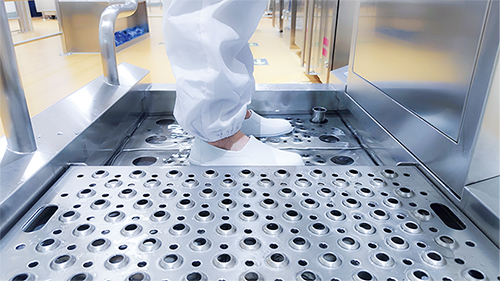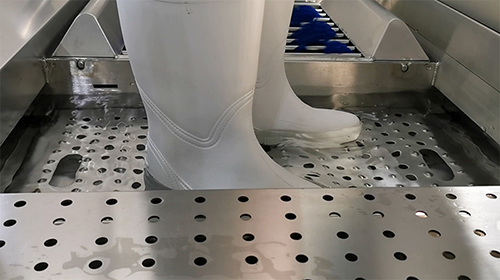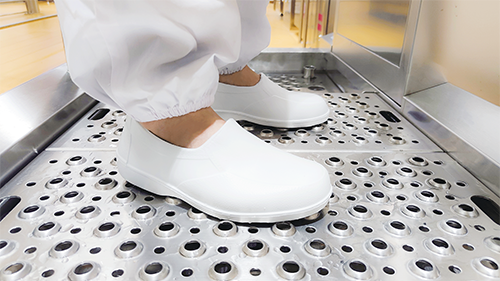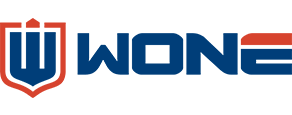Clean & Sanitize Boots Footwear: A Non-Negotiable Protocol for Food Factory Safety
In the meticulously controlled environment of a food factory, every surface, every tool, and every procedure is scrutinized for its impact on
product safety. Often overlooked but critically important is the hygiene of employee footwear. Boots and shoes can be silent carriers of path-
ogens, dirt, and allergens, tracking contaminants from outside environments or between different zones within the facility. Implementing and
strictly enforcing a rigorous footwear cleaning and sanitization protocol is not just best practice; it's a fundamental defense in your food safe-
ty arsenal.
Why Footwear Hygiene is Paramount
Imagine the journey of a pair of work boots. They traverse parking lots, locker rooms, corridors, and finally, the high-hygiene production area
. They can pick up:
- Pathogens:Bacteria (like Listeria, Salmonella, E. coli), viruses, molds, and yeasts from the ground.
- Physical Contaminants: Dirt, stones, metal fragments, wood splinters.
- Allergens: Traces of nuts, dairy, gluten, or other allergens from other areas.
- Chemicals: Residues from cleaning agents or external environments.
If not properly managed, these contaminants can be transferred directly onto production floors, equipment, or even product itself, posing a
severe risk to consumer safety and product integrity, potentially leading to recalls, brand damage, and regulatory non-compliance.
The Essential Two-Step Protocol: In & Out
A robust footwear hygiene program requires action at both entry and exit points:
1. Entry to the Production Area (The First Line of Defense):
Before entering the workshop:
- Employees must always stop at designated footwear cleaning stations before entering any food handling or production zone.
Brushing:
- brush the shoes or boots to remove loose dirt, debris, and organic matter. This physical removal is crucial, as sanitizers work best on clean surfaces.
-
.png)
_19637.png)
Disinfection:
- Step into a disinfection pool or use a dedicated boot sprayer containing an approved food-grade disinfectant solution. Ensure comple-te contact with the sole and lower parts of the footwear. The solution concentration and contact time must be strictly maintained according to manufacturer and food safety plan guidelines.
-


Drying:
- Allow excess disinfectant to drain or use designated mats before proceeding onto production floors. Wet boots can create slip hazards and dilute disinfectants.
-

2. Exiting the Production Area (Preventing Contamination Spread):
Leaving the Workshop:
- The hygiene responsibility doesn't end when the shift does. As employees leave the production environment, they must revisit the footwear cleaning station.
Repeat Brushing & Disinfection:
- Thoroughly brush off any production residues (flour, meat particles, sauces, etc.) accumulated during the shift. Follow this with the same disinfection process used upon entry. This critical step prevents employees from tracking potential production-area contaminants (like raw meat pathogens or allergens) back into changing rooms, rest areas, or outside.
The Final Touch: Drying & Disinfection
After the post-shift cleaning and disinfection, the process continues:
1. Proceed to Changing Room:
- Employees go directly to the designated changing area.
2. Boot Drying Rack:
- Place the cleaned and disinfected boots onto a specialized boot drying rack.
3. Warm Air & Ozone Power:
- These racks are not simple dryers. They utilize warm air circulation to efficiently evaporate moisture trapped inside the boot – a prime environment for microbial growth if left damp overnight.
4. Ozone Disinfection:
- Crucially, the best racks incorporate an ozone (O3) generation function. Ozone is a powerful oxidizing gas that penetrates deep into the boot's interior, seams, and linings, effectively killing bacteria, viruses, and molds that surface cleaning might miss. This overnight treatment ensures boots start the next shift truly sanitized from the inside out.
_63195.png)
.png)
Key Takeaways for Food Factory Footwear Safety
Dual Action is Mandatory:
- Cleaning and disinfection are required both before entering AND after leaving production zones.
Brushing is Foundational:
- Effective disinfection *requires* thorough brushing to remove physical debris first.
Use Approved Chemicals:
- Only use disinfectants suitable for food environments and effective against target pathogens. Monitor concentrations diligently.
Invest in Drying Technology:
- Warm air boot dryers with ozone are not a luxury; they are a critical component for complete internal sanitation and preventing micro-bial proliferation in damp conditions.
Training & Compliance:
- Consistently train all employees on the why and how of the protocol. Regular audits ensure compliance. Make it a non-negotiable part of the GMP (Good Manufacturing Practices) culture.
Maintain Stations:
- Keep boot brushes clean, replace disinfectant solutions regularly, and ensure footbaths/drains are clear and functional. Maintain dry-ing racks according to manufacturer instructions.
Maintaining impeccably clean and sanitized footwear is a cornerstone of food safety in any manufacturing facility. By implementing the rigor-
ous dual-entry/exit cleaning protocol and leveraging technology like ozone-enhanced drying racks, food factories significantly reduce the risk
of cross-contamination via footwear. This protects consumers, safeguards your brand reputation, ensures regulatory compliance, and ultim-
ately contributes to producing safe, high-quality food. Don't let your guard down at the door – make footwear hygiene an uncompromising
priority.


